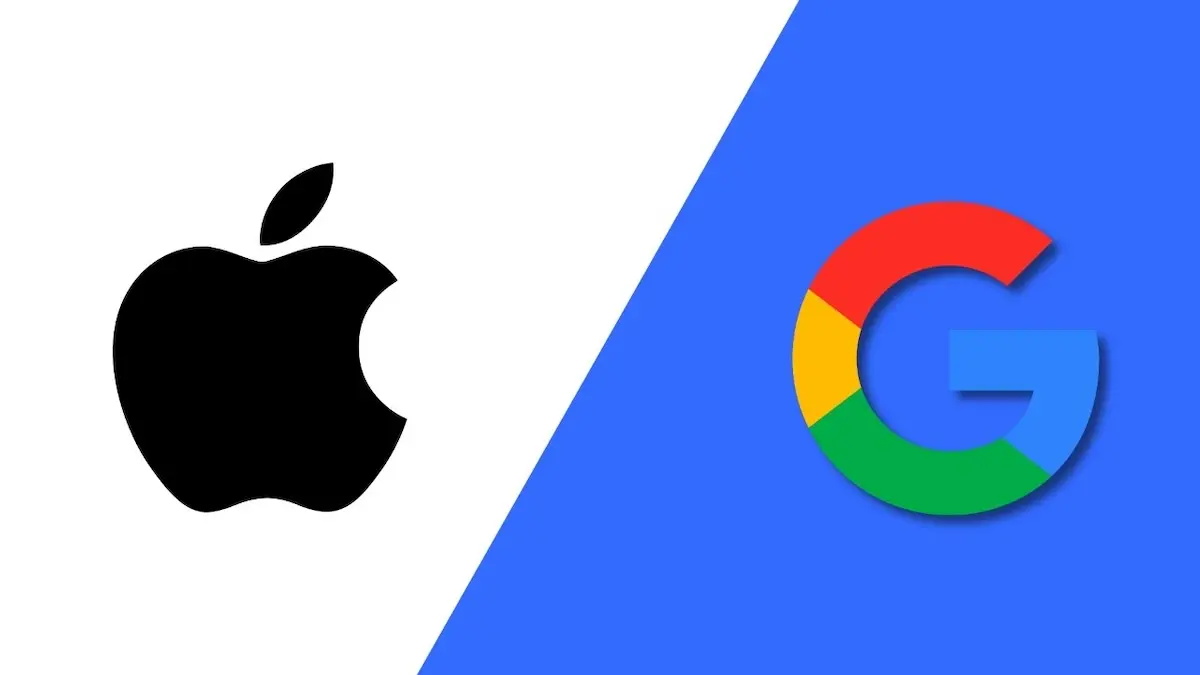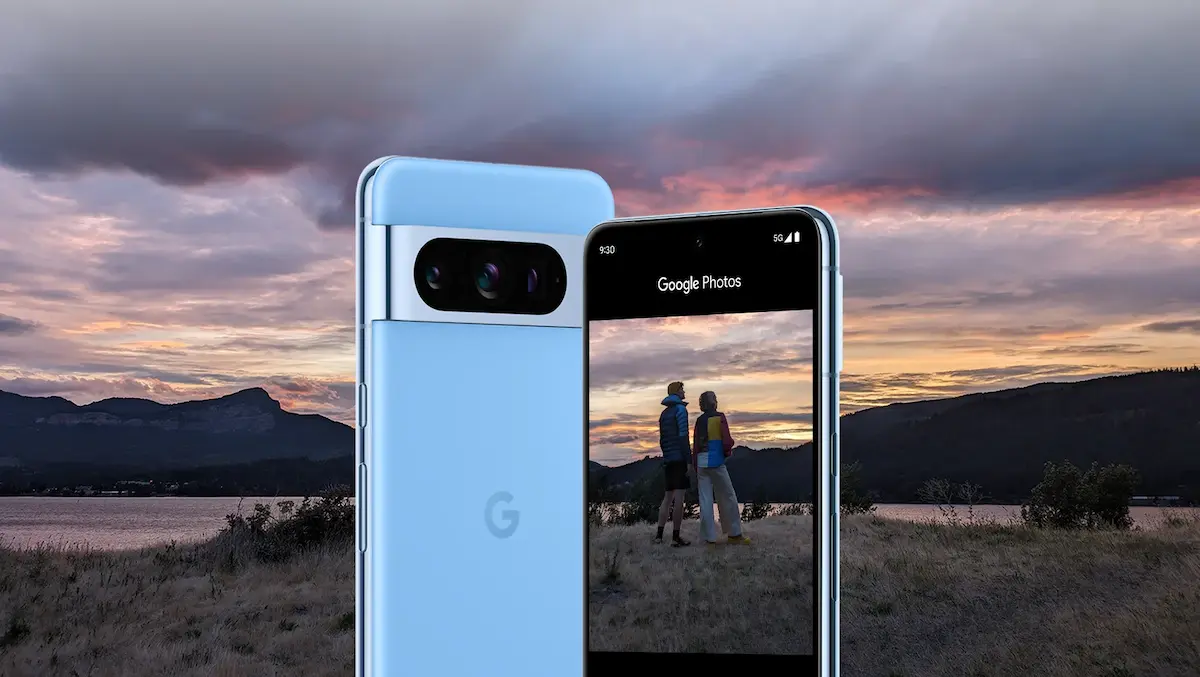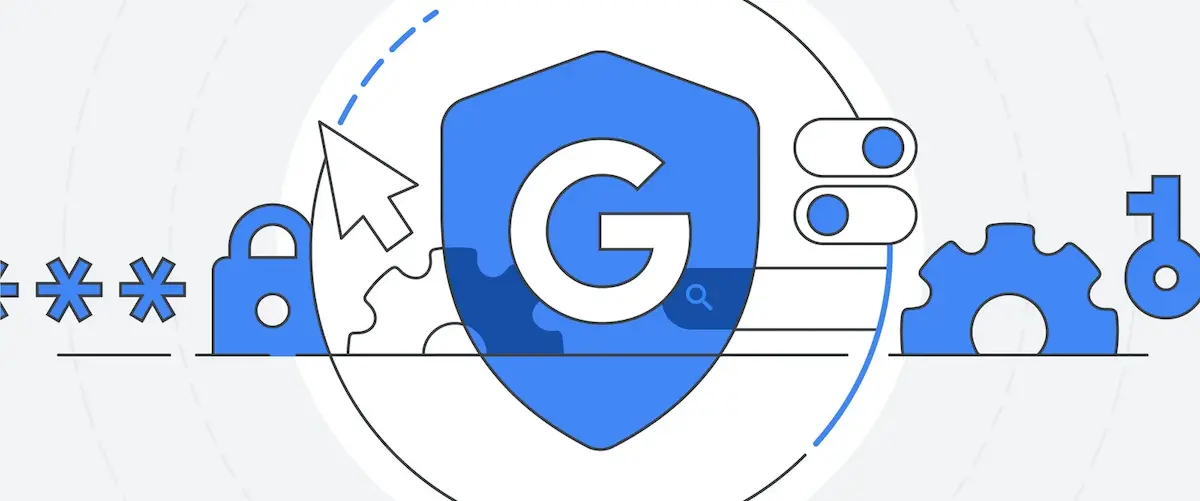Google Pixel 8 Pro

While I work in the tech industry, I’m not a stereotypical tech enthusiast who purchases the latest and greatest devices. I’m not a trailblazer. I tend to purchase devices that I think are high quality that will last for a long time.
I held out on buying a smartphone for the longest time. Back in the day, text messaging wasn’t unlimited and I was perfectly happy talking to friends on the phone. In February 2014, I purchased my first smartphone – a Google Nexus 5. It wasn’t until a year or two later that I added mobile data to my phone plan, a (insert sarcasm) blazing fast 100MB of data at 3G speeds. Those were the days. Since then, I changed phone carriers from Rogers to Zoomer Wireless with loyalty increases in my data plan from 2GB to 4GB at LTE speeds. I also purchased new smartphones as old ones died or are no longer receiving security updates. After the Google Nexus 5, I purchased the original Google Pixel, then the Google Pixel 5.
While the first two phones are long dead, the Google Pixel 5 still works well but it is no longer receiving security updates. Now that I use an authenticator app on my phone, I didn’t want my old phone to die before I replaced it. I’ll write a blog post about my experience when the time comes to port my data between phones. I decided to purchase a Pixel 8 Pro. It includes many new features, but the one that I’m looking forward to is 7 years of security updates. That’s unprecedented for an Android phone.
Apple vs Google

When choosing a smartphone, why did I decide to go with Google? I love Apple devices – they’re premium quality. I especially love Apple laptops, which I think are well-built and last a long time. Much of that can be attributed to their software as well – Mac OS is impressive and is updated every year. I think the same can be said about iPhones. They’re high quality and the camera takes exceptional photos. But there is only one Apple App Store and when I first looked into smartphones, I didn’t want to be locked in. I love the Apple app store monopoly as a shareholder, but I don’t like it as a consumer.
What I love about Google is that their phones offer some of the best cameras and software out there. Starting with the original Google Pixel, which had the best camera at the time with exceptional low-light performance. Not only that, Google offered a lifetime of unlimited original-quality photo storage for the original Google Pixel. They stopped offering this perk on new phones since then. The software is also excellent. I wanted to make sure that I had access to the latest Android version. Samsung also does a good job of promptly releasing Android updates, while some other manufacturers take time. There are multiple Android app stores available. You don’t have to use the Google Play store. While that attracted me during my initial research, to be perfectly honest I don’t use any other Android app store and I rarely buy apps. Finally, there is a lot more price competition in the Android space. Apple rarely offers a discount to maintain its luxury brand status.
Finally, an honorable mention goes to Samsung and OnePlus. They make really good phones, but they weren’t on my radar when I first purchased a phone.
Pixel 8 vs Pixel 8 Pro

I tend to purchase the cheapest phone that gives me the capabilities that I want. I rarely purchase higher-end devices (that includes laptops) that offer features that I will rarely use, if at all. In order of priority, here are the smartphone features that I’m looking for:
- Best-in-class camera: I am an amateur photographer (aren’t we all with our smartphones?) who has mostly ditched the DSLR and likes taking nature, landscape, and food (the camera eats first) photography.
- Great screen: I use a lot more smartphone apps than I used to in the past, including reading websites. So a bright and responsive screen is important. The bump up to a 90Hz screen on the Google Pixel 5 was a huge improvement.
- Long-lasting battery: I used to go multiple days without having to charge my phone.
- Small form factor: I like being able to hold a smartphone in one hand.
I don’t use my phone for gaming, music, or movies. On the rare occasions that I watch a YouTube video, I either have my earbuds in or I cast the video to another device.
The Pixel 8 has much of the same hardware as the Pixel 8 Pro. It meets all of the criteria that I listed above, but there are 2 major reasons why I decided to buy the more expensive Pixel 8 Pro:
- While the camera hardware is the same where it matters, Google decided to restrict some camera and Google Photos features to the Pro version. I don’t think there’s a good reason to lock these software features out of the non-Pro phone.
- With a promise of 7 years of software updates, I wanted to make sure I had a phone with enough physical memory to last a long time.
What I don’t like is that the Pixel 8 Pro is a large phone. It’s going to take a while to get used to the size.
It’s All About the Software

Since the launch of the original Google Pixel phone, the mantra has always been that it’s about the software. When you buy a phone, you’re locked into the hardware and hardware is always improving each year. On the other hand, updated software can be deployed to any device. Some software may require specialized hardware to run smoothly but for the most part, any recent hardware should be able to run anything. That is why I don’t understand why certain camera and Google Photos features are only available on the Pro version. For example, a feature like video boost that operates on cloud-stored video is only available on the Pro version. It doesn’t make sense because the video boost operation happens in the cloud and not on your phone.
In any case, what I love about the Google Pixel phones since the original Google Pixel is its continuously improving software. The camera app does things that I had to buy specialized software to do in the past. For example, stitching photos together to produce a panorama or improving the dynamic range of a photo with HDR. While I still have to do this manually with photos from a DSLR, I never have to do it again with my smartphone. In addition to the difference in portability, this is why I have mostly stopped using a DSLR.
The next impressive feature that I enjoy is call screening. Google does an excellent job of filtering out spam emails. There are only a few occasions where spam emails make it into my inbox or where legitimate emails are marked as spam. Taking this to another level, when I receive phone calls I can see when a phone number is a suspected spam caller. I immediately ignore those calls. For the ones that are not flagged, I can screen the call with an automated assistant. Most spam callers will hang up at that point. There were only a few times in the past when I answered the phone after screening. This feature alone has greatly improved quality of life, especially in Canada where there is no such thing as a do-not-call registry.
The Google Pixel 8 phones introduced impressive new software capabilities that, again, I purchased specialized software to do. There are new AI features in Google Photos that allow you to change the sky, erase unwanted things from a scene, or move things around in a scene. They even have a feature called Best Take that lets you use faces from a series of photos to produce a new photo where everyone is looking at the camera and has their eyes open. We’ve all had that problem and now we can solve it with software.
In the past, I purchased a photo software package called Luminar AI. I had high expectations for this software because it had AI in its name. It does a lot of things that the Google Pixel 8 phones do. But what I really want is for the software to analyze my photo and improve it without having to make manual adjustments. I’m looking forward to the future when someone can make this happen.
AI is very good at reading a wall of text and generating a summary. The new Google assistant can read the content on a website in Google Chrome and produce a summary.
Google’s Promise

With the launch of the latest Google Pixel phone, Google announced that they will provide 7 years of Android updates, security updates, feature drops, and replacement parts. In the past, Pixel phones had 3 years of software updates. So this announcement of extended support is a big deal.
Google has a history of retiring products like Google Domains, Stadia, and Hangouts. On the mobile device front, Google has eliminated unlimited original-quality photos and Pixel Pass. While it’s possible that Google may realize that they shouldn’t offer 7 years of software updates for future Pixel phones, I think they will uphold their end of the deal for at least the Google Pixel 8. After all, all phones die eventually. But what this signals to consumers is that their mobile device will be safe for its useful lifespan.
Google Store Discounts and Promotions

During the 2023 Christmas holiday, Google is offering $200 off the Pixel 8 and $250 off the Pixel 8 Pro. In addition, Google Wallet users who opted in to receive promotional offers were given a $100 off promo code.
Google One subscribers who pay for the 2TB or higher plans also receive 10% back in Google Store credit on Google Store purchases. Usually, it costs $13.99/mo for this plan but there is a promotion for $3.49/mo for 3 months. It’s worth it to pay a small price to receive $100 in Google Store credit.
There’s a Google Opinion Rewards app that pays users for small surveys and tasks. The payout is high compared to other survey apps. For less than a minute of my time, I have been paid as little as $0.10 and as high as $0.79, with an average payout of $0.25. The app pays in Google Play credits that have a one-year expiry. I had Google Play credits expiring soon. Fortunately, I could pay for the Google One subscription using Google Play credits.
Telecom Discounts and Promotions

From Black Friday until the end of the year, it’s easy to find incredible phone plan deals that include free or low-cost flagship phones. However, these deals often require a high minimum monthly plan price. You also don’t get to keep the phone at the end of the contract. I prefer to buy an unlocked phone directly from the manufacturer and pay for a plan that doesn’t include a device fee. I also don’t like paying a higher monthly phone bill for excess data that I will never use.
Conclusion
I missed out on the iPhone 15 promotion at Wealthsimple because I am waiting to transfer my accounts until the new year. Hopefully, I can negotiate an equivalent or higher promo amount when I transfer to Wealthsimple in the coming year. Until then, I’m looking forward to the updated camera and software included with the new Google Pixel 8 Pro.
What about you? What smartphone features are important to you?